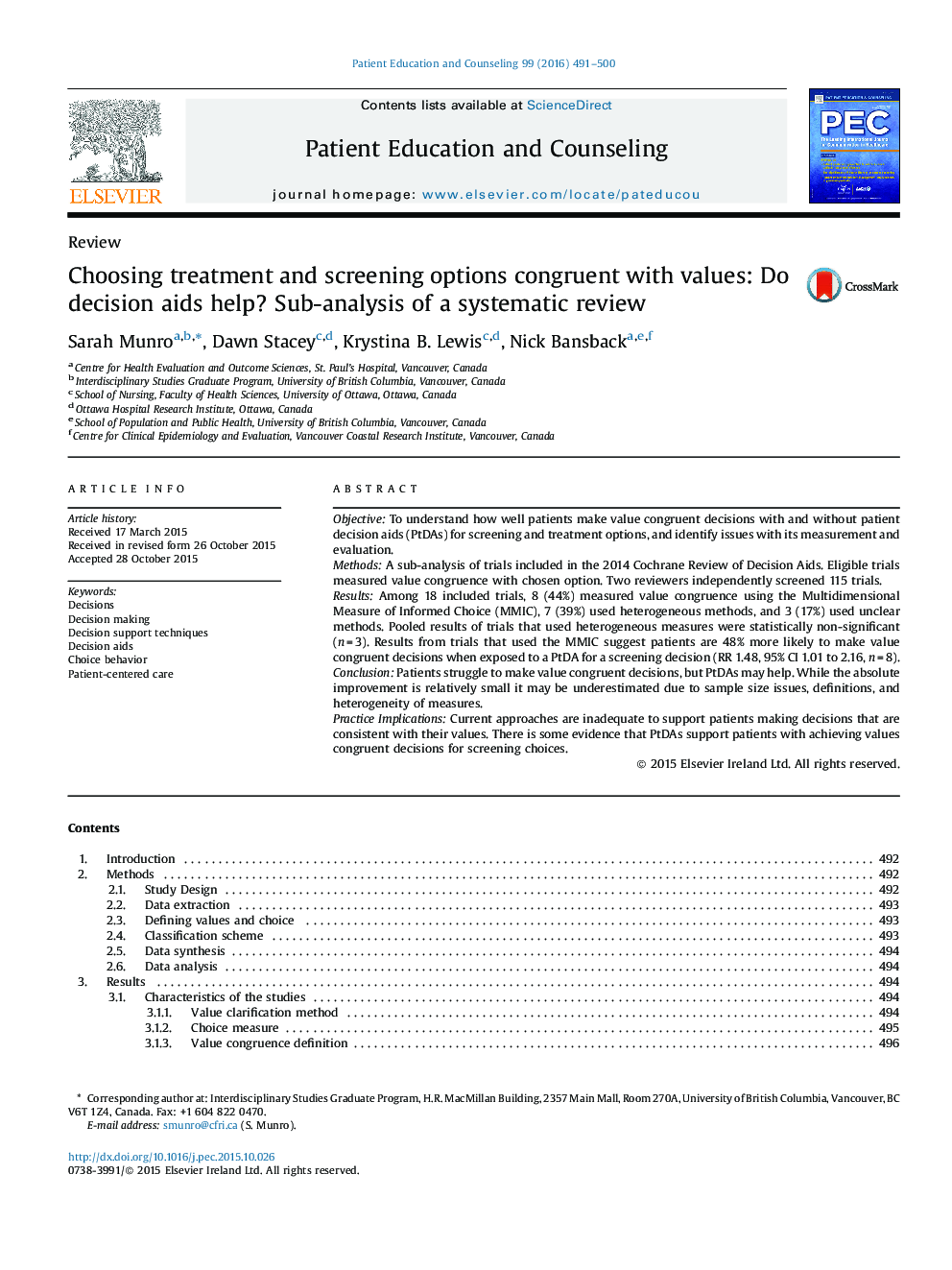| Article ID | Journal | Published Year | Pages | File Type |
|---|---|---|---|---|
| 6152547 | Patient Education and Counseling | 2016 | 10 Pages |
â¢We reviewed the impact of patient decision aids on value congruent decision-making.â¢Few randomized controlled trials have measured value congruence.â¢Decision aids have a small positive effect on value congruent decisions.â¢The effect is limited by sample size and heterogeneity of measures.â¢Existing value congruence measures need improvement.
ObjectiveTo understand how well patients make value congruent decisions with and without patient decision aids (PtDAs) for screening and treatment options, and identify issues with its measurement and evaluation.MethodsA sub-analysis of trials included in the 2014 Cochrane Review of Decision Aids. Eligible trials measured value congruence with chosen option. Two reviewers independently screened 115 trials.ResultsAmong 18 included trials, 8 (44%) measured value congruence using the Multidimensional Measure of Informed Choice (MMIC), 7 (39%) used heterogeneous methods, and 3 (17%) used unclear methods. Pooled results of trials that used heterogeneous measures were statistically non-significant (n = 3). Results from trials that used the MMIC suggest patients are 48% more likely to make value congruent decisions when exposed to a PtDA for a screening decision (RR 1.48, 95% CI 1.01 to 2.16, n = 8).ConclusionPatients struggle to make value congruent decisions, but PtDAs may help. While the absolute improvement is relatively small it may be underestimated due to sample size issues, definitions, and heterogeneity of measures.Practice ImplicationsCurrent approaches are inadequate to support patients making decisions that are consistent with their values. There is some evidence that PtDAs support patients with achieving values congruent decisions for screening choices.
